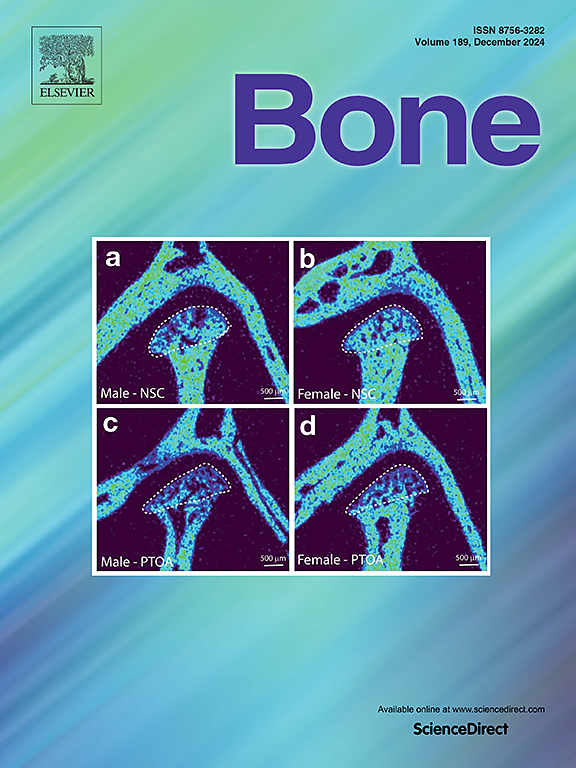Advancing HR-pQCT-based homogenised FE models with smooth structured hexahedral meshes
IF 3.5
2区 医学
Q2 ENDOCRINOLOGY & METABOLISM
引用次数: 0
Abstract
Nonlinear homogenised finite element (hFE) models can accurately predict stiffness and strength of ultra-distal sections of the radius and tibia using in vivo HR-pQCT images. Recent findings showed good stiffness prediction at these distal sections but a limited ability to reproduce experimental strain localisation. The coarseness of voxel-based meshes reduces the computational effort at the cost of heavily simplifying the underlying geometry of the cortex, the gradient of material properties, and the resulting strain distribution. To overcome these limitations, we present a comprehensive approach to generating fully automated, smooth, and structured hexahedral meshes for HR-pQCT scans at the distal radius and tibia. This study used three datasets to validate the proposed hFE pipeline and its short-term repeatability: ex vivo 2nd generation HR-pQCT images of 21 human radii and 25 human tibiae, and 208 in vivo images from same-day repeated scans on 39 individuals. Results show high accuracy in predicting stiffness (tibia: , radius: and yield force (tibia: radius: Mesh sensitivity analysis reveals stabilisation within a 3 % error margin. Dice similarity coefficients between mesh and scanned image were and good element quality was achieved across the validation datasets (tibia: radius: Along with the improved volumetric representation of distal cortical and trabecular bone geometry and the good element quality, the new pipeline shows gains in computational performance: min for triple-stack tibia images and min for double-stack radius images, respectively. Generating structured meshes with consistent element-to-element correspondence facilitates seamless comparison between patient models or in longitudinal settings, providing an additional clinical information.

求助全文
约1分钟内获得全文
求助全文
来源期刊

Bone
医学-内分泌学与代谢
CiteScore
8.90
自引率
4.90%
发文量
264
审稿时长
30 days
期刊介绍:
BONE is an interdisciplinary forum for the rapid publication of original articles and reviews on basic, translational, and clinical aspects of bone and mineral metabolism. The Journal also encourages submissions related to interactions of bone with other organ systems, including cartilage, endocrine, muscle, fat, neural, vascular, gastrointestinal, hematopoietic, and immune systems. Particular attention is placed on the application of experimental studies to clinical practice.
 求助内容:
求助内容: 应助结果提醒方式:
应助结果提醒方式:


